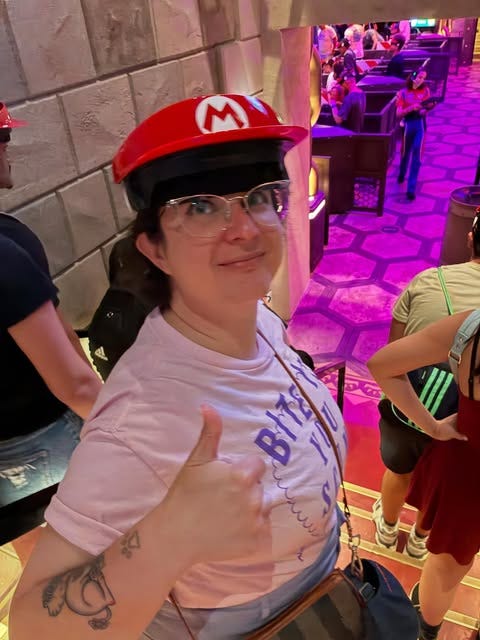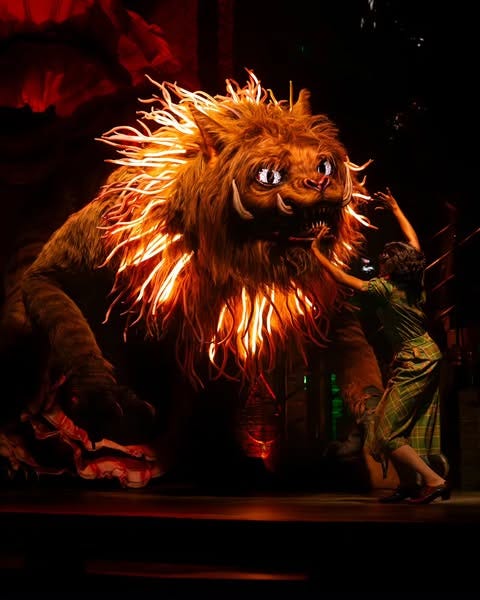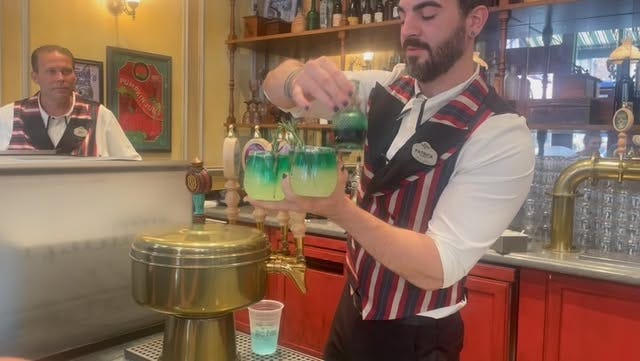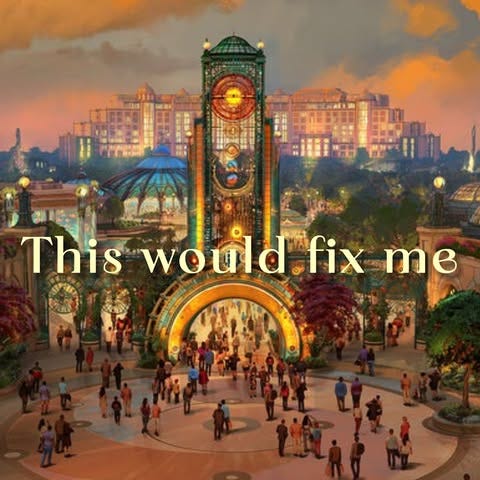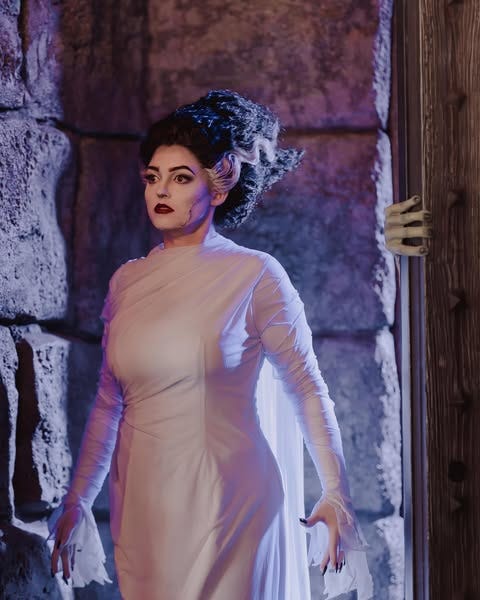World building as cognitive release
Epic Universe is an exhale you didn't know you were waiting to release
The first week of Universal Studios’ new Epic Universe park was nothing short of incredible. As we've seen with other areas of Universal, their wide-ranging intellectual properties work in their favor—each of the four themed lands offers insider signals for super fans while remaining accessible and enjoyable for general audiences. It’s something Universal does especially well.
I’ve never seen the movie How To Train Your Dragon but, my God, Berks is cool. Incorporating uses for AI that genuinely make people happy, packed with thrill rides and rousing Viking theming, and animatronics walking among us – it’s a fun place to be. Dark Universe should receive awards for the way they lean on science fiction books, classic movies and horror legends. From roaming violin players to The Invisible Man and staff that never break character, the actors add massive value to admission. And Ministry of Magic is a studio backlot 1930’s Paris (more Fantastic Beasts than Harry Potter), but a very enjoyable one filled with carnivals and squeeze box music and shiny pastel macarons.
But what truly sets Epic Universe apart is the food. Theme parks are known for their novelty snacks—colorful, sweet, and often covered in sprinkles—but this isn’t quite that. The culinary team at Universal has managed to blend bold ingredients like saffron and mango in ways that are approachable even for picky eaters, yet still create a distinct sense of place. Meals feel like something you’d actually eat within those fan universes, deepening the immersion and making you part of the story. It was, in fact, a bloody piece of meat on a stake in a promo photo that encouraged the Mary Shelley reader in me to make the trip in the first place. Not since I first read about Turkish Delight in The Chronicles of Narnia and begged my mom to find some in solidly Italian South Brooklyn have I wanted to eat my way through a story quite like this.
The immersion into these worlds can seem childish on surface level. You might dismiss this as “Disney adult” stuff, or say this kind of distraction from current events isn’t healthy, or wave away the quick-service meals in favor of something suited for a gourmand. But there’s more happening here. When adults engage with imaginative spaces—especially through immersive meals and themed environments—they’re practicing a psychological process known as world building.
World building is the act of imagining a time and place through a lens of need, character, or idea. It requires lifting mental boundaries and creating complex systems, relationships, and hierarchies. In that way, it becomes a form of unbounded problem solving—one without the constraints and negativity we often encounter in real life. It’s a practice used in therapy, not just for children but also for adults, including those with dementia, to foster cognitive flexibility and resilience. What looks like escape is often a way to metabolize confusion and chaos.
In the Guardian, Tom Shone explains. “Many cultural figures have been drawn to these imaginary worlds. Wolfgang Amadeus Mozart and his sister, for example, shared a secret language and addressed one another as “King” and “Queen” of their fictional kingdom. The Brontes imagined an “infernal world” of Byronic villains and architectural majesty. CS Lewis made up a land of animals where cats acted like the knights of the round table. Robert Louis Stevenson drew maps. JRR Tolkien invented languages, while the Polish science-fiction writer Stanisław Lem issued fake passports. Friedrich Nietzsche and his sister Elisabeth created an imaginary world revolving around an inch-and-a-half-tall porcelain squirrel.”
Tapping into this kind of creativity can also help induce flow state—that feeling of being so absorbed in a task that time disappears; you might call it being “in the zone.” It’s linked to sharper mental acuity, improved problem solving, emotional reframing, and a healthier ability to cope with disappointment. The imaginary hierarchies framed in world building can help with real-life relationship building. Overall, adults who play are triggering endorphin release, which can reduce cortisol levels. When you’re immersed in a fantasy land, engaged and playful, your brain releases endorphins and dials down cortisol. That’s not frivolous. That’s recovery.
The National Institute for Play says, “the essence of play lies not in the activity itself but in the personal experience of engagement and satisfaction it brings.”
So, those burnt-out adults standing in line for butterbeer? They’re not just escaping. They’re rebuilding. They’re quietly fortifying their minds—raising their stress thresholds and rekindling their capacity for wonder. If the food happens to be good, too, then flow state becomes the icing on the cake.
Next week, I’ll be sharing my first piece on food security, along with a behind-the-scenes look at food waste and redistribution.
For now—what’s your favorite method of world building? What activity transports you to another time and place?
Goodnight, Commenters


